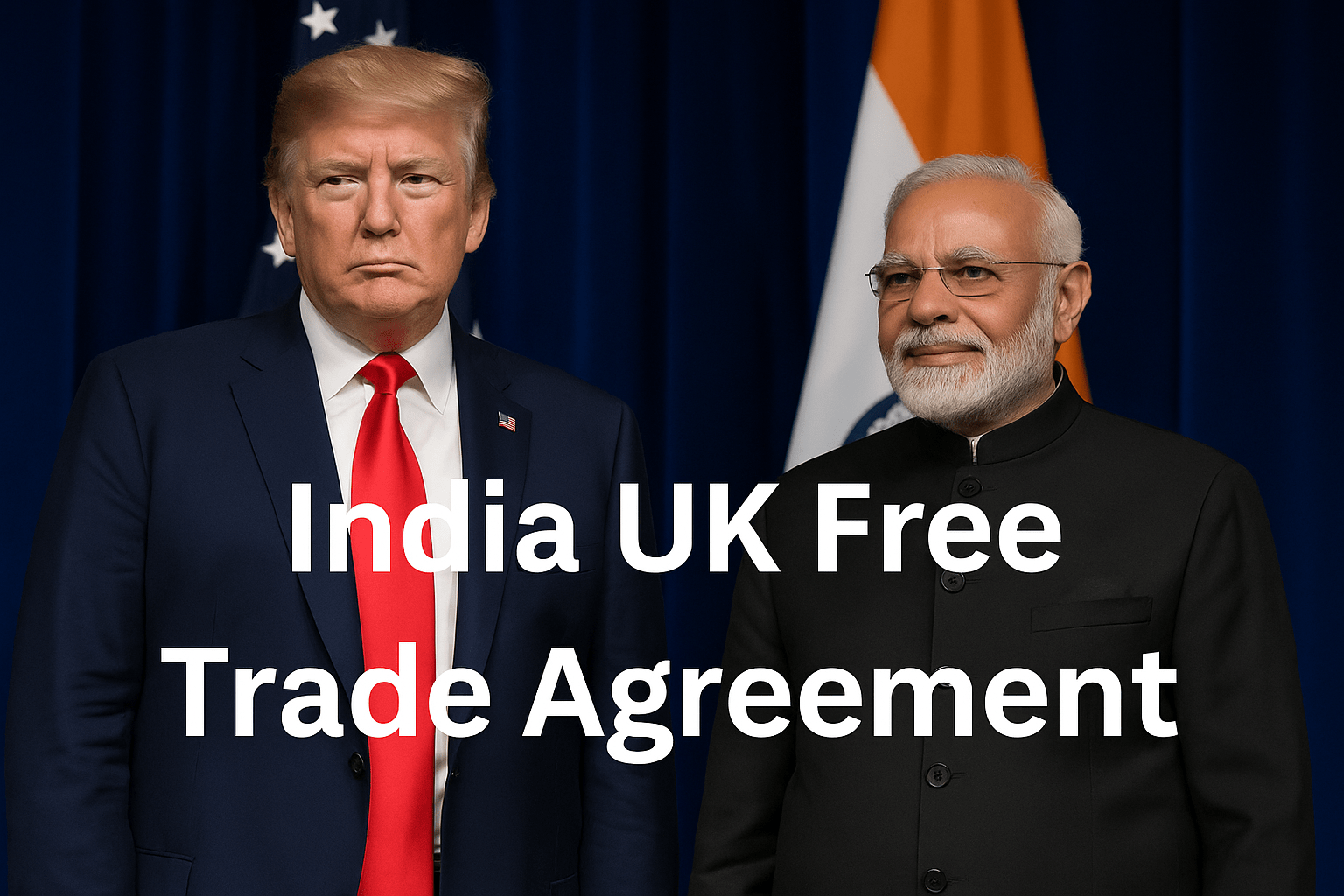The much-anticipated India UK Free Trade Agreement marks a significant moment in modern trade diplomacy, not just for the two participating nations but for the global economic landscape. Signed during Indian Prime Minister Narendra Modi’s high-profile visit to the UK in July 2025, this agreement is more than a symbolic gesture it is a blueprint for long-term, mutually beneficial international partnerships.
This historic UK India trade deal, which was under negotiation since 2022, has now officially entered its implementation phase. The agreement is being hailed as a major victory for strategic diplomacy and a powerful example of how patience, trust, and mutual respect can produce durable economic outcomes.
A Deal Forged Through Diplomacy, Not Deadlines
Unlike trade agreements shaped under pressure or artificial timelines, the India UK Free Trade Agreement evolved through over three years of steady negotiation. Former British Prime Minister Boris Johnson initially aimed to wrap up the deal by Diwali 2022—a deadline that proved overly ambitious. However, rather than compromise quality for speed, both nations recommitted to a deeper, more collaborative approach.
Fourteen intense negotiation rounds followed, each grappling with complex issues such as tariff reductions on British alcoholic beverages and India’s demand for a liberal visa policy for skilled workers and social security benefits for its professionals in the UK. The eventual consensus reflected real political will especially following key leadership changes in both countries, with Modi’s re-election in India and Keir Starmer’s rise to power in the UK.
Why This Agreement Matters Now

In today’s fragmented global economy, dominated by protectionist rhetoric and political instability, the India UK trade agreement 2025 stands out as a symbol of resilience and foresight. For India, this deal opens greater access to UK markets, technological cooperation, and increased foreign investment. For Britain, it enhances post-Brexit trade ties and establishes a strategic economic bridge to Asia.
What truly sets this free trade agreement India UK apart is its structure crafted with longevity in mind. The deal addresses not only tariff-related matters but also touches on labor mobility, environmental sustainability, and digital trade. It demonstrates how modern FTAs can be robust and adaptable to 21st-century challenges.
A Stark Contrast to Trump’s Trade Policy
When compared to Trump trade policy, the India UK Free Trade Agreement highlights a stark difference in approach. The Trump administration has relied heavily on tariff threats, rigid deadlines, and unilateral pressure often at the cost of long-term trust.
Take the US India trade talks as an example. The two countries have completed five rounds of discussions with no resolution in sight. Self-imposed deadlines, including one on July 9, have come and gone, with another looming on August 1. Despite no formal tariff warning to India, the specter of economic penalties remains.
Trump’s trade playbook, characterized by speed and pressure, might produce quick headlines but lacks the strategic depth that agreements like the India UK FTA demonstrate. As Treasury Secretary Scott Bessent recently admitted, “Quality matters more than speed” a rare but telling acknowledgment from within the administration.
Lessons for the U.S.: Trust Over Threats

If Washington truly seeks a sustainable deal with India or other strategic partners, it must embrace the principles that guided the India UK Free Trade Agreement: diplomacy, patience, and respect. India has made it clear—it will not be bullied into fast-tracked deals. Instead, it values fair terms, long-term vision, and sovereignty.
The India UK FTA also sets a precedent for how democracies can collaborate without compromising national interests. Neither country yielded on its core demands, yet both made space for constructive compromise. That’s the hallmark of a successful partnership, not one built on fear or transactional wins.
Looking Ahead: A New Era of Global Trade
The successful completion of the India UK Free Trade Agreement sends a clear message to world powers: enduring trade partnerships are built on shared values, not pressure tactics. This agreement shows that when nations focus on cooperation over coercion, the results can be both economically rewarding and geopolitically stabilizing.
As implementation begins, eyes will be on how the agreement impacts job creation, market access, and bilateral investment flows. Early indicators suggest that sectors such as technology, education, pharmaceuticals, and renewable energy will see substantial gains.
For nations still stuck in tariff battles and trade wars, this FTA offers a modern, tested roadmap.







